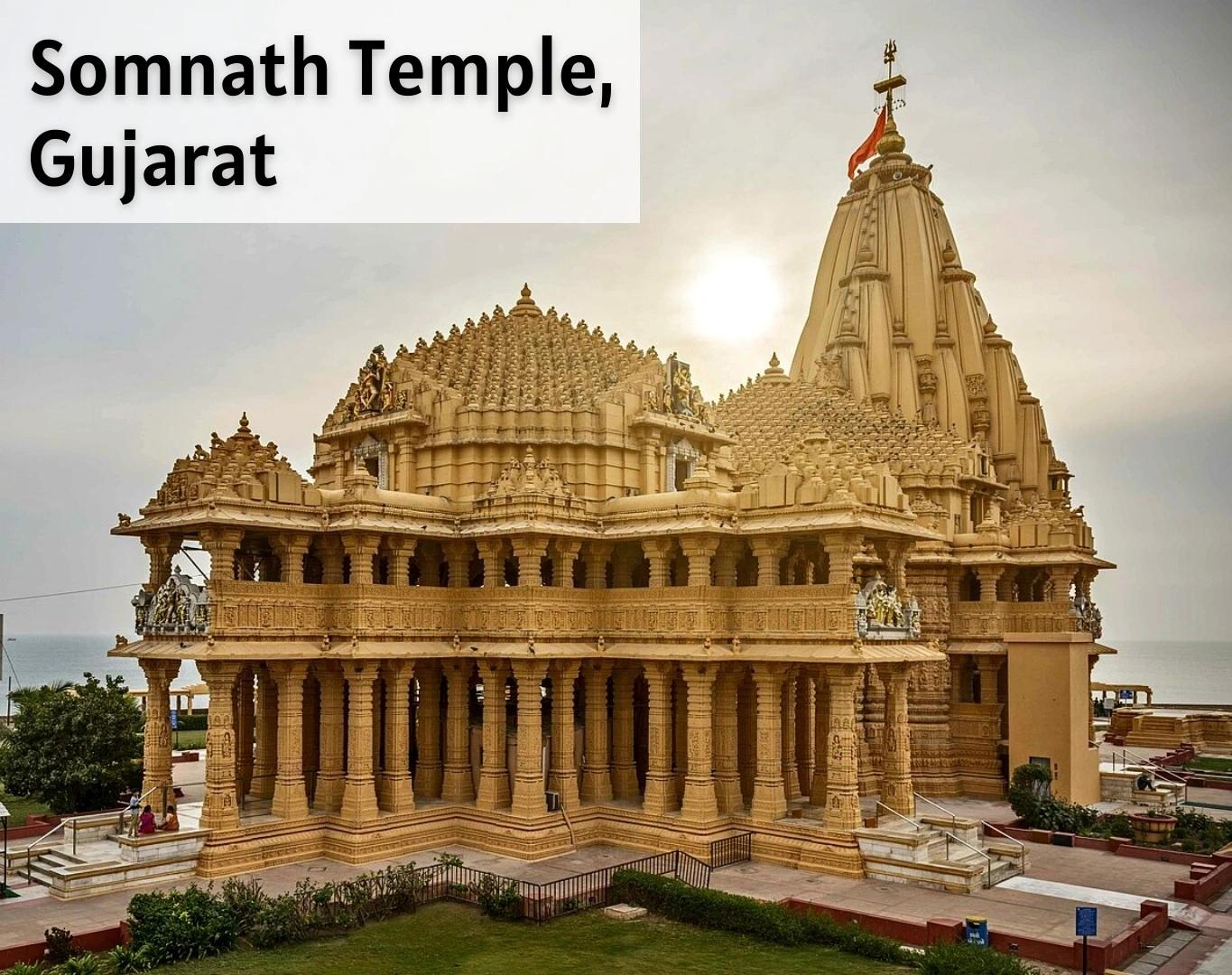Context:
The inauguration of the Ram temple in Ayodhya on January 22, 2024 by the Indian Prime Minister is reminiscent of the inauguration of Somnath temple seventy-three years ago by the Indian President, Rajendra Prasad.
About Somnath Temple
- Location: In Prabhas Patan, Veraval, in Gujarat.
- Veraval was an ancient trading port.

Somnath Temple, Gujarat
- Hindu Holy Place: Somnath temple is an important Hindu pilgrimage and tourist spot of Gujarat.
- It is the holy place of the First Aadi Jyotirling Shree Somnath Mahadev and the sacred soil where Lord Shri Krishna took his last journey.
- A pilgrimage site from ancient times on account of being a Triveni sangam, the confluence of three rivers — Kapila, Hiran and Sarasvati.
- Chairman of the Trust: Presently the Prime Minister of India is the chairman of Shree Somnath Mandir trust.Construction & Reconstruction of Somnath Temple
- Origin: Somnath’s first temple is said to have existed 2000 years ago.
- Reconstruction: In 649 AD, King Maitre of Vallabhini built a second temple in place of the temple and renovated it.
- In 815 AD, Pratishtha King Nag Bhatt II constructed the temple for the third time using a red stone (sandstone).
- During 1026-1042 AD, Solanki Raja Bhimdev built the fourth temple of Bhoj and Anhilwad Patan, Parmar King of Malwa.
- In 1782, Maratha queen Ahalyabai Holkar built a small temple at the site.
- After India’s independence, those ruins were demolished and the present Somnath temple was reconstructed in the Māru-Gurjara style of Hindu temple architecture.
- Attack: In 725 AD, the old ruler of Sindh attacked the temple and destroyed the temple.
- In 1026, Mahmud Ghazni lent the precious jewels and property of Somnath temple.
- After looting, slaughtering innumerable pilgrims of the temple and burning the temple and destroying it.
- Somnath was destroyed when the Delhi Sultanate occupied Gujarat in 1299.
- In 1394 it was destroyed again.
- In 1706, Mughal ruler Aurangzeb again demolished the temple.
About Māru-Gurjara Architecture or Solanki style
- Origin: The style originated from that of the dynasties preceding the Solanki dynasty, mainly the Gurjara-Pratihara dynasty.
- Prevalence: Although originated as a regional style in Hindu temple architecture, it became popular in Jain temples.
- Its Features: Curvilinear Shikhara, Free standing Kirti Torana, Kunda or a Temple Tank, Heavy Carvings on ceilings of Mandapa, High Plinths and Balconies looking out on multiple side
-
- The current serene, symmetrical structure was built to traditional designs on the original coastal site: it’s painted a creamy color and boasts a little fine sculpture. The large, black Shiva lingam at its heart is one of the 12 most sacred Shiva shrines.
|
Nehru’s Opposition to the Inauguration of Somnath Temple
- Political Reasons: As the policy they followed was secularism, and this ceremony was a religious based manner, in addition, revivalist in character.
- Financial Reasons: For the Saurashtra government contribution of Rs 5 lakh towards the ceremony, he criticized it, citing austerity measures and economic challenges and suggested expenditure on education, on health and other beneficent services.
- Secular Nature of State: He emphasized that being a secular state, it is not appropriate to associate with any religious events.
- Opposition to External Affairs Circular: A circular was sent round to Indian ambassadors to collect water from the major rivers, soil and twigs from the mountains of the countries. Nehru asked the Ministry of External Affairs to ignore these requests.
News Source: The Indian Express
![]() 20 Jan 2024
20 Jan 2024

